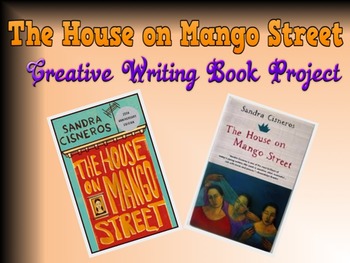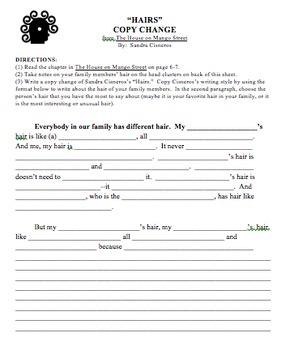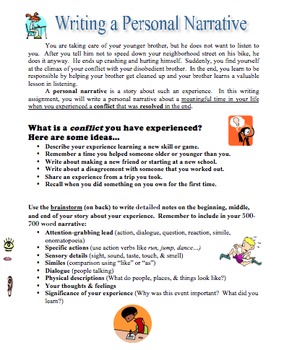The House on Mango Street - Creative Writing Book Project
Monica Lukins
1.3k Followers
Grade Levels
6th - 10th
Subjects
Resource Type
Standards
CCSSRL.7.1
CCSSRL.7.2
CCSSRL.7.3
CCSSRL.7.5
CCSSRL.7.6
Formats Included
- Word Document File
Pages
35 pages
Monica Lukins
1.3k Followers
What educators are saying
Excellent resource for using Cisnero's writing style to kick start student creative writing. I use this at the beginning of the year and overlap the unit with Hispanic Heritage Month.
Description
This is a great "Back to School" introductory creative writing project intended to help you, as the teacher, get to know your students, and introduce them to the elements of plot in literature and instill a passion for creative writing in them!
Students enjoy reading selected stories from Sandra Cisneros's novel, The House on Mango Street, and creating their very own book called, "The House on (Student's Street)", which includes stories and poetry about their lives and neighborhoods.
Throughout this project (35 pages attached), students learn about plot, characters, setting, conflict, climax, resolution, similes, metaphors, descriptive writing, narrative writing, poetry writing, etc. Students enjoy the process of expressing themselves through creative writing.
Some examples of activities included are drawing a neighborhood map of their own, "copy change" creative writing on the chapters "Hairs" and "My Name," writing a descriptive essay about a "dream house" (Students LOVE this one!), writing a conversation using correct dialogue rules, writing poems including an ode, and writing a personal narrative.
Enjoy getting to know your students in this project while instilling a love of creative writing in them!
Students enjoy reading selected stories from Sandra Cisneros's novel, The House on Mango Street, and creating their very own book called, "The House on (Student's Street)", which includes stories and poetry about their lives and neighborhoods.
Throughout this project (35 pages attached), students learn about plot, characters, setting, conflict, climax, resolution, similes, metaphors, descriptive writing, narrative writing, poetry writing, etc. Students enjoy the process of expressing themselves through creative writing.
Some examples of activities included are drawing a neighborhood map of their own, "copy change" creative writing on the chapters "Hairs" and "My Name," writing a descriptive essay about a "dream house" (Students LOVE this one!), writing a conversation using correct dialogue rules, writing poems including an ode, and writing a personal narrative.
Enjoy getting to know your students in this project while instilling a love of creative writing in them!
Total Pages
35 pages
Answer Key
N/A
Teaching Duration
3 Weeks
Report this resource to TPT
Reported resources will be reviewed by our team. Report this resource to let us know if this resource violates TPT’s content guidelines.
Standards
to see state-specific standards (only available in the US).
CCSSRL.7.1
Cite several pieces of textual evidence to support analysis of what the text says explicitly as well as inferences drawn from the text.
CCSSRL.7.2
Determine a theme or central idea of a text and analyze its development over the course of the text; provide an objective summary of the text.
CCSSRL.7.3
Analyze how particular elements of a story or drama interact (e.g., how setting shapes the characters or plot).
CCSSRL.7.5
Analyze how a drama’s or poem’s form or structure (e.g., soliloquy, sonnet) contributes to its meaning.
CCSSRL.7.6
Analyze how an author develops and contrasts the points of view of different characters or narrators in a text.





